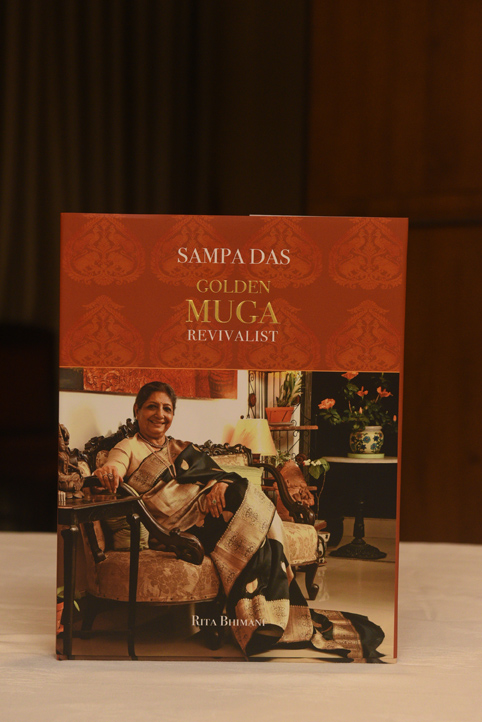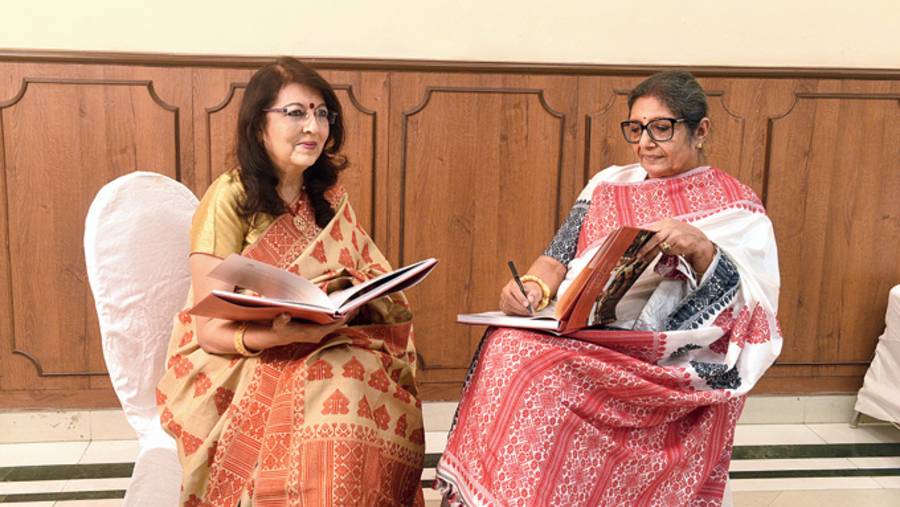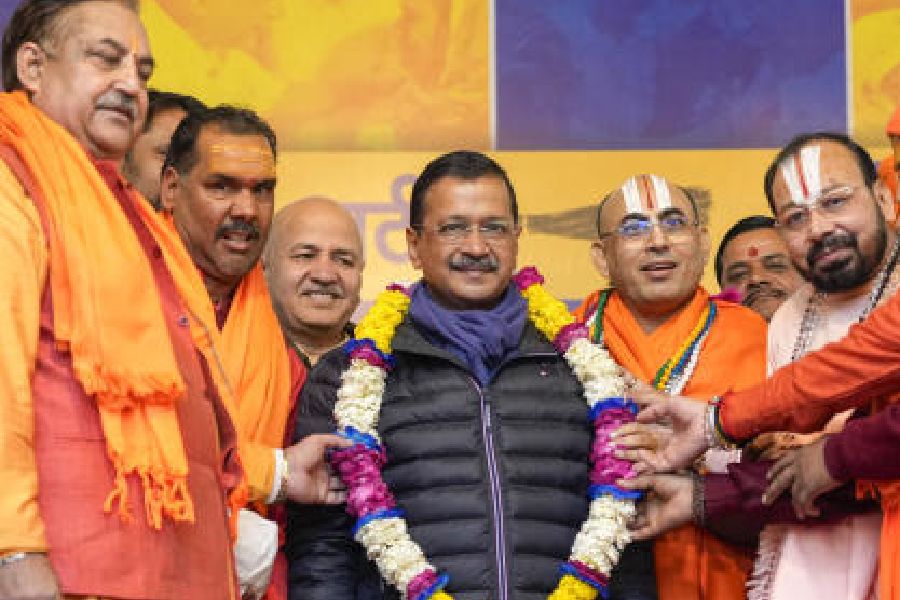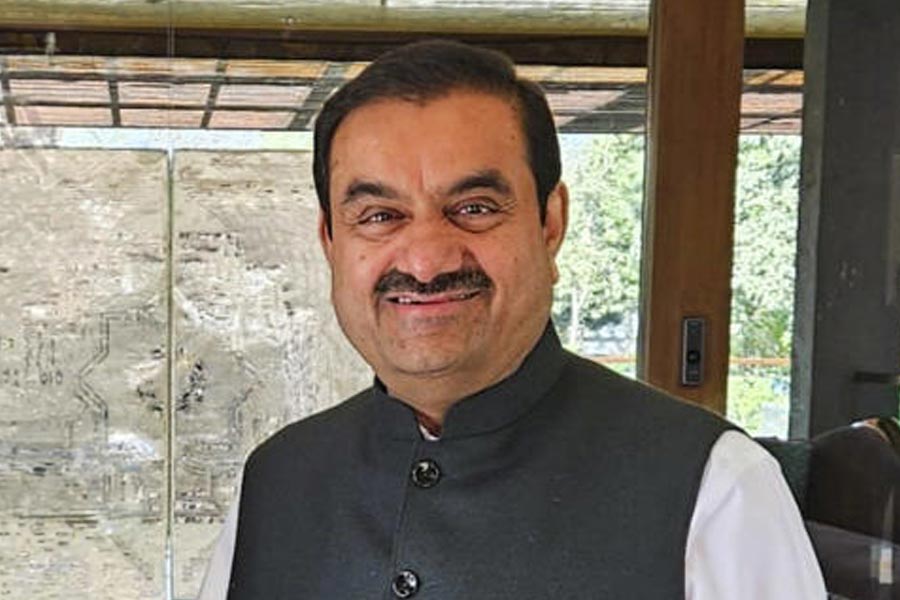Sampa Das has been a champion of all things handwoven throughout her life and, for nearly three decades, her love affair with Assam silks has been a whirlwind one. A romance that has grown on her and enriched her life with positivity. “I never felt unhappy in life,” Sampa, told The Telegraph, ahead of the launch of Sampa Das: Golden Muga Revivalist that has been written by Rita Bhimani. “Muga is one of the richest and costliest silks of the world,” added Sampa. The book has been in the making for the past couple of years and was designed online during the lockdown, a “huge challenge” according to Rita, but fulfilling too. The Telegraph chat on Sampa and Rita’s labour of love.
How did the book come about?
Sampa: Rita has done everything. She has been writing about me for the past 35 years in several magazines. This book is all about my designing and my journey with Assam handloom for the last 27 years.
Rita: When I saw that she was doing such amazing work, I jumped to the idea of writing about it. In fact, it was Sampa who asked me to do this piece for the Indian Airlines magazine Swagat. I did not have much idea about muga and so, I sat with her and she explained the whole thing beautifully. Since then, whenever she’s had an exhibition, I have written about her collection.
Sampa: We’ve known each other for 50 years at least… very close friends.
What was the process of putting it together like?
Rita: I have been writing mainly on public relations and I have done three books on it and my fourth book was on the 100 years of The Calcutta School of Music. Then when Sampa suggested that why don’t I do this whole book on muga, highlighting her journey, going into where she sourced from, her travel to the villages... it interested me. I went with her to Sualkuchi and I came across something I never expected. We are used to seeing weavers working in factories, but here were individual hamlets with looms and they were individuals producing the most wonderful stuff. Sampa had started encouraging them, giving them money, designs and time. This makes muga even more special. Everything is handmade with a touch of love. And imagine experiencing the unique food too...
Sampa, how did you fall in love with muga?
Sampa: When I was a child, 77 years ago, there used to be mill saris. Ekta bhishon shundor gondho chhilo. My love for handlooms started from there. I haven’t worn anything artificial ever. Wherever I have travelled, I have collected handlooms. I am in talks with museums where muga can be displayed.
I am married to an Assamese and whenever I would drape a muga, people would shower me with appreciation. When I started working, I saw Assam did not figure on the list among those who collected saris.

Sampa Das: Golden Muga Revivalist is priced at Rs 1,500 The Telegraph Picture
How have you reinterpreted muga?
Sampa: All my designs are age old, which I have revived. If you order five saris at a time and give me five crore rupees, it would still take me one year to make them. That is why people appreciate it so much. Muga takes two months. The design is so rich. Assamese people are very lazy (laughs), so they are happy weaving one sari and then not work for several days. Somehow I have to catch them and make them start weaving a new one. Earning money is never on their minds. They are happy with their maachher jhol-bhaat. That is also why my saris are so beautiful.
Rita: I think the wonderful thing that Sampa has done is you can’t really contemporise muga. There are some very traditional motifs and she has kept all the motifs, but sometimes she has played with the colour combinations for a different look. People who buy her saris will not get a second muga sari quite like that. They are pieces you pass on to the next generation.
Are you finding new generations of weavers?
Sampa: A lot of people have died or are going away. And not every weaver can weave it. Ahom and Boro women weave for me. Generally it is women, but there are men too. The children of the weavers are now getting into other jobs. I fear this art might get extinct in my lifetime and that is also a reason why I want to keep them in museums, but I am not giving up. I am a warrior.
Tell us about your personal collection of saris...
Sampa: All handlooms. I do wear mekhela-sador and Assamese saris. I love white saris and taant and khaddar saris. I don’t wear embroidery.
Rita: Kishoreda (Kishore Bhimani, veteran sports writer, columnist, commentator and husband, who passed on, in October) would buy Kanjeevarams from the south. I would go to Assam to compere this show and instead of a fee, they would give me muga. Sampa has also gifted me mugas over the years. Once I started wearing those, I also started buying from her to give it to my daughter-in-law and special friends.











